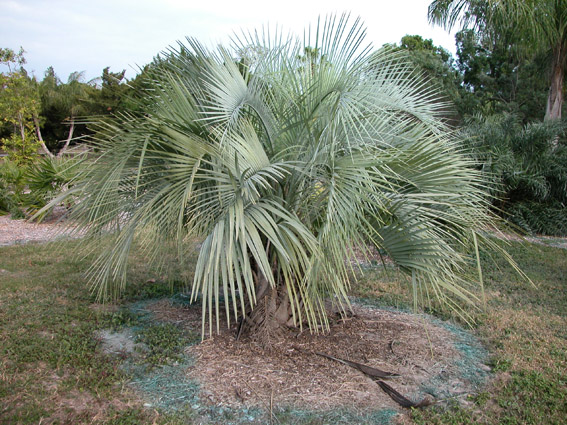- Acanthophoenix
- Acrocomia
- Actinokentia
- Actinorhytis
- Adonidia
- Aiphanes
- Allagoptera
- Ammandra
- Aphandra
- Archontophoenix
- Areca
- Arenga
- Asterogyne
- Astrocaryum
- Attalea
- Bactris
- Balaka
- Barcella
- Basselinia
- Beccariophoenix
- Bismarckia
- Borassodendron
- Borassus
- Brassiophoenix
- Burretiokentia
- Calamus
- Calyptrocalyx
- Calyptrogyne
- Calyptronoma
- Carpentaria
- Carpoxylon
- Caryota
- Ceratolobus
- Ceroxylon
- Chamaedorea
- Chamaerops
- Chambeyronia
- Chelyocarpus
- Chuniophoenix
- Clinosperma
- Coccothrinax
- Cocos
- Corypha
- Cryosophila
- Cyphokentia
- Cyphophoenix
- Cyphosperma
- Daemonorops
- Deckenia
- Desmoncus
- Dictyocaryum
- Drymophloeus
- Dypsis
- Elaeis
- Eleiodoxa
- Eremospatha
- Eugeissona
- Euterpe
- Gaussia
- Geonoma
- Guihaia
- Hedyscepe
- Hemithrinax
- Howea
- Hyophorbe
- Hyospathe
- Hyphaene
- Iriartea
- Iriartella
- Itaya
- Jailoloa
- Johannesteijsmannia
- Juania
- Jubaea
- Jubaeopsis
- Kentiopsis
- Kerriodoxa
- Korthalsia
- Laccospadix
- Laccosperma
- Lanonia
- Latania
- Lemurophoenix
- Leopoldinia
- Lepidocaryum
- Lepidorrhachis
- Leucothrinax
- Licuala
- Linospadix
- Livistona
- Lodoicea
- Lytocaryum
- Manicaria
- Manjekia
- Marojejya
- Masoala
- Mauritia
- Mauritiella
- Maxburretia
- Medemia
- Metroxylon
- Myrialepis
- Nannorrhops
- Nenga
- Neonicholsonia
- Neoveitchia
- Nephrosperma
- Normanbya
- Nypa
- Oenocarpus
- Oncocalamus
- Oncosperma
- Orania
- Oraniopsis
- Parajubaea
- Pelagodoxa
- Phoenicophorium
- Phoenix
- Pholidocarpus
- Pholidostachys
- Physokentia
- Phytelephas
- Pigafetta
- Pinanga
- Plectocomia
- Plectocomiopsis
- Podococcus
- Pogonotium
- Ponapea
- Prestoea
- Pseudophoenix
- Ptychococcus
- Ptychosperma
- Raphia
- Ravenea
- Reinhardtia
- Retispatha
- Rhapidophyllum
- Rhapis
- Rhopalostylis
- Roscheria
- Roystonea
- Sabal
- Sabinaria
- Salacca
- Saribus
- Satakentia
- Satranala
- Schippia
- Sclerosperma
- Socratea
- Solfia
- Sommieria
- Syagrus
- Synechanthus
- Tahina
- Tectiphiala
- Thrinax
- Trachycarpus
- Trithrinax
- Veitchia
- Verschaffeltia
- Voanioala
- Wallaceodoxa
- Wallichia
- Welfia
- Wendlandiella
- Wettinia
- Wodyetia
- Zombia
- x Jubautia splendens
- ?? Acoelorrhaphe
- ?? Bentinckia
- ?? Brahea
- ?? Clinostigma
- ?? Colpothrinax
- ?? Copernicia
- ?? Cyrtostachys
- ?? Dictyosperma
- ?? Dransfieldia
- ?? Heterospathe
- ?? Hydriastele
- ?? Iguanura
- ?? Incertae sedis & excluded names
- ?? Loxococcus
- ?? Micronoma
- ?? Paripon
- ?? Pritchardia
- ?? Rhopaloblaste
- ?? Serenoa
- ?? Washingtonia

Distribution
Map uses TDWG level 3 distributions (https://github.com/tdwg/wgsrpd)
Native to northeastern Argentina in the provinces of Misiones, Santa Fe, Corrientes, and Entre Rios, forming great forests in sandy areas; and to Uruguay in the departments of Paysandli and Rio Negro, in sandy soils. (Glassman, S.F. 1979: Re-evaluation of the Genus Butia With a Description of a New Species)A
Discussion
- Butia yatay is easily distinguished from other arborescent species of Butia by the relatively large pistillate flowers (10-16 mm vs. 3-8 mm long). Its geographic range apparently does not overlap with that of B. capitata, B. eriospatha, or B. purpurascens. However, B. yatay is sympatric with B. paraguayensis in at least part of its range (in Corrientes and probably Misiones) and may be confused with the latter species during its immature, acaulescent stage of growth. Crovetto and Piccinini (1951) did an ecological study of 13 different stands (palmares) of Butia yatay in northern Argentina (provinces of Entre Rios, Corrientes, and Santa Fe). At first, they believed that these palmares represented a stage in the psammosere succession because the plants grew in sandy soil. After intensive studies, however, they concluded that the Butia yatay community was not involved in the formation of the regular climax of the region, but was independent of the typical succession of that area. Hence, these palmares were interpreted as being a relict climax, or an ancient vegetation type left over from a previous geological period when climate conditions were perhaps different than they are today. (Glassman, S.F. 1979: Re-evaluation of the Genus Butia With a Description of a New Species)A
Common Name
- Yatay. (Glassman, S.F. 1979: Re-evaluation of the Genus Butia With a Description of a New Species)A
Description
- Trees (2-) 8-12 m tall, about 40 em in diam., old petiole bases persistent on trunk when young, eventually dehiscing completely; sheathing base 58-60 em long, petiole 50-70 cm long, margins armed with coarse spiny teeth about 3 cm long on lower part, teeth becoming gradually smaller on upper part; rachis of leaf 170-200 em long, pinnae 68-72 in each side, regularly arranged, middle ones 75-81 cm long, 2.0-2.4 cm wide, mostly with acute, asymmetrical tips; expanded part of spathe 115-125 cm long, 10-12 em wide, smooth or striate, more or less glaucous outside; branched part of spadix 78-82 cm long, rachillae numerous (100 or more), each 30-32 em long; pistillate flowers ovoid, 10-16 mm long, 6-10 mm in diam.; lower staminate flowers 8-13 mm long, those above 5-8 mm long; mature fruit ovoid 3.0-4.2 cm long, 2.5-2.8 cm in diam., with prominent, conical beak, persistent perianth 1.8-2.2 cm high, locules 1-3, seeds 2.5-3.0 cm long, 1.2-1.4 cm in diam. (Glassman, S.F. 1979: Re-evaluation of the Genus Butia With a Description of a New Species)A
Materials Examined
- ARGENTINA. CORRIENTES: Goya Curran s.n. (US); Dept. Santo Tome, 8 mi E. of Virasoro, Maruñak 173 (F); Dept. Capital, 2 km de R. 12, Maruñak 180 (F); Dept. Mburucuya, Estancia Santa Teresa, forming extensive groves, T. M. Pedersen 4456 (GR, NY, S); ENTRE RIOS: Concordia, Castellanos 31-974 (K); Dept. Loreto, Rio Yabebiry, L. Ekman s.n. (A). URUGUAY. PAYSANDU, N. of Quebracho, H. H. Bartlett 21175 (US). CULTIVATED, Herter 346 (F, G, NY, S, SP). (Glassman, S.F. 1979: Re-evaluation of the Genus Butia With a Description of a New Species)A
- Log in to post comments

